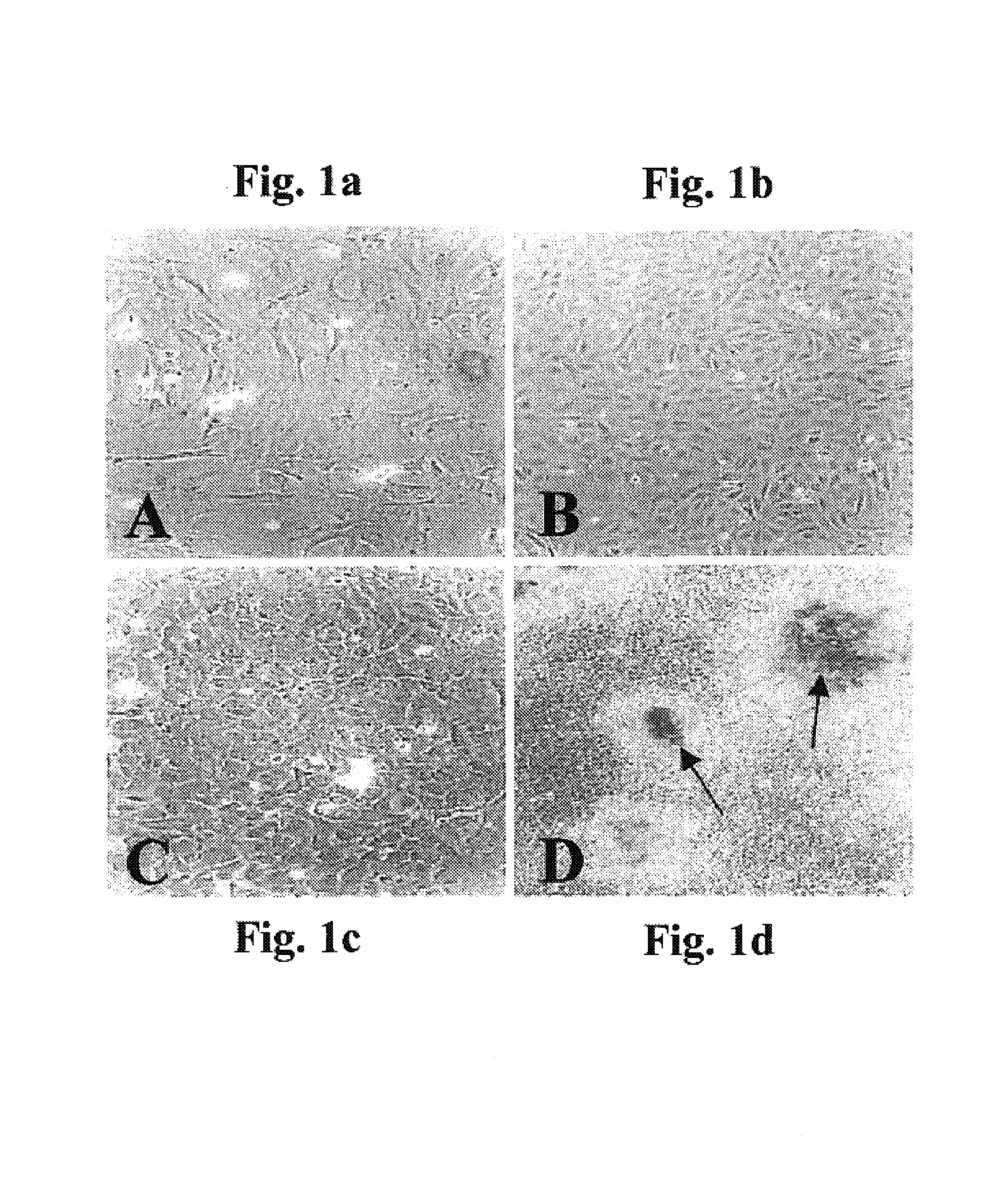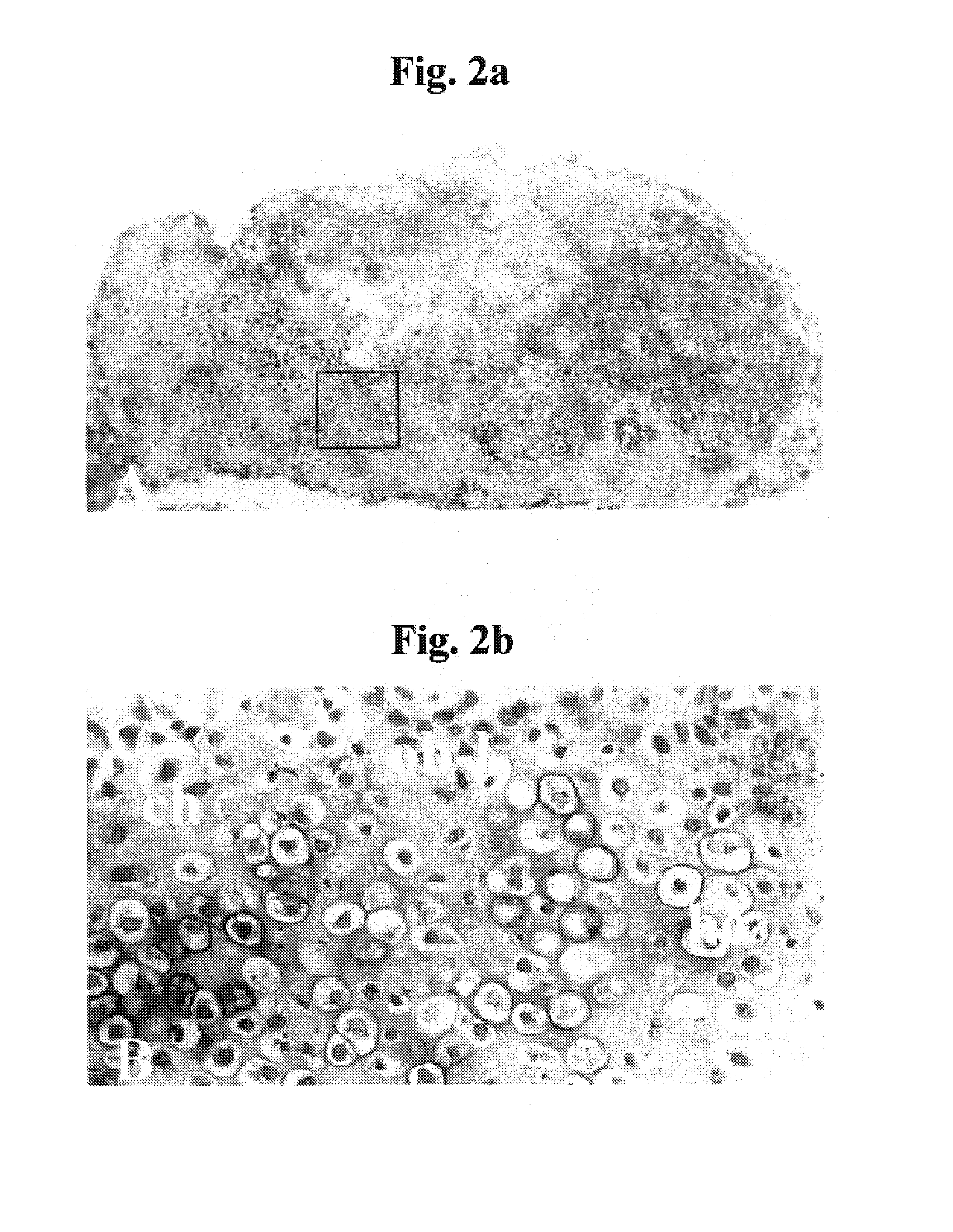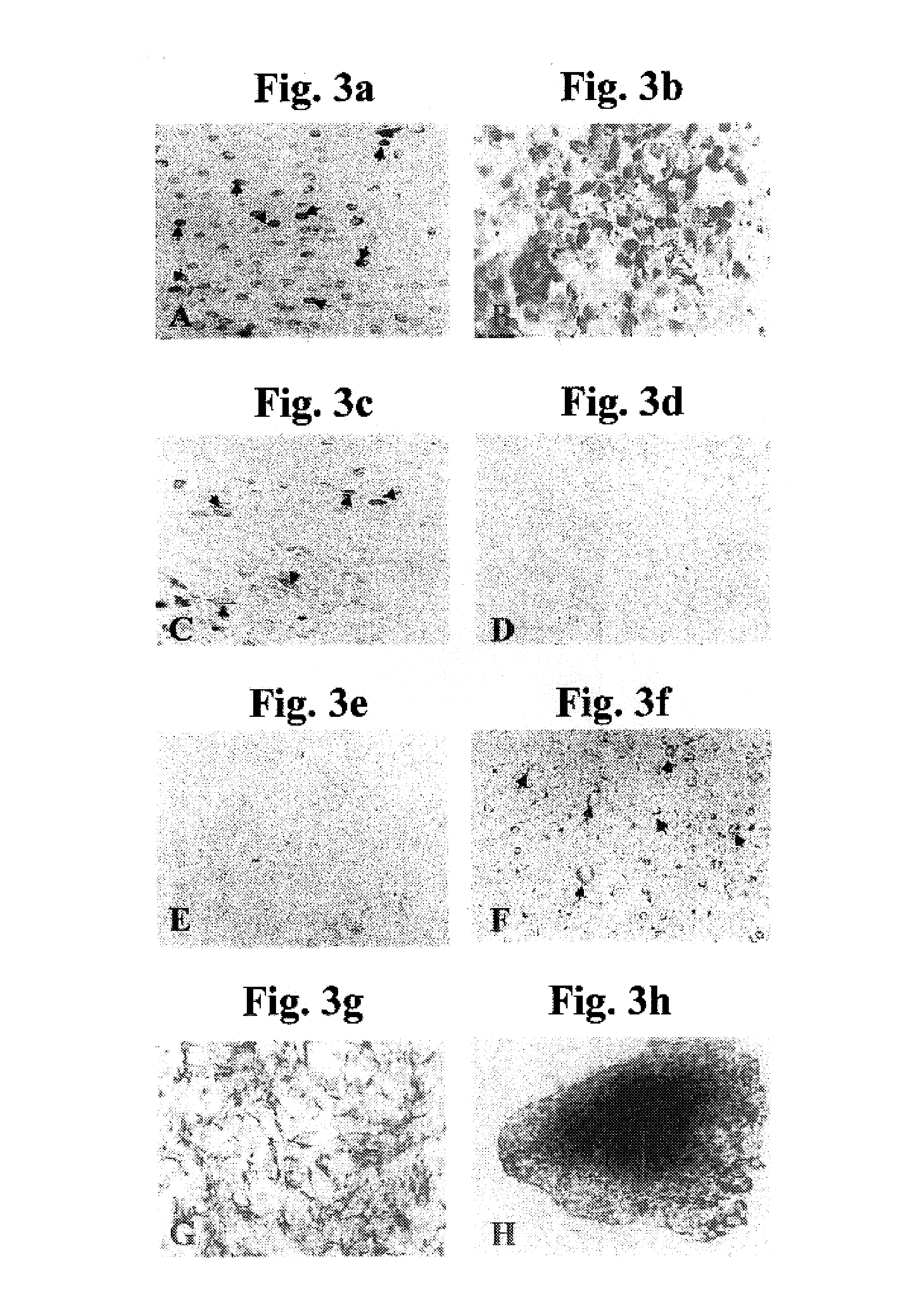Cultured cartilage/bone cells/tissue, method of generating same and uses thereof
a technology of cartilage and bone cells, which is applied in the field of cultured cartilage/bone cells/tissue, method of generating same and uses thereof, can solve the problems of not being aware of their existence nor function, damaged cartilage tissue does not receive sufficient or proper stimuli to elicit a repair response, and arthritis alone is an enormous medical and economic problem
- Summary
- Abstract
- Description
- Claims
- Application Information
AI Technical Summary
Benefits of technology
Problems solved by technology
Method used
Image
Examples
example 1
Method of Optimally Isolating Mandibular Condyle Chondrocytes, and of Culturing Primary Chondrocytes to Optimally Generate Optimally Differentiated Cultured Chondrocytes / Endochondral Bone Cells
[0238]Background: Cartilage / bone diseases include numerous highly debilitating diseases, such as arthritis, which are of tremendous medical and economic impact and for which no optimal treatment methods exist. An optimal strategy for treating such diseases would be to generate and administer cultured chondrocytes / endochondral bone cells so as to replace / repair lost / damaged cartilage / bone. While various methods of generating cultured chondrocytes / bone have been proposed in the prior art, these have been highly suboptimal for various reasons, as described in the Field and Background of the Invention section above. Notably, primary chondrocyte-derived cell cultures tend to undergo dedifferentiation, acquire fibroblastic features, and lose most of the characteristics of mature chondrocytes, and th...
example 2
Genetic Transformation of Isolated Mandibular Condyle Derived Chondrocytes
[0266]Materials and Methods:
[0267]The capacity to genetically transform cultured mandibular condyle derived chondrocytes (MCDCs) isolated as described in Example 1, above, would be potentially highly useful in therapeutic applications involving cell therapy with such cells and for investigating chondrocyte biology in-vitro.
[0268]Constructs: Sequences encoding osteoprotegerin (OPG) were cloned into expression vector pIRES2-EGFP (Clontech) yielding the bicistronic expression vector OPG-IRES-GFP for co-expression of osteoprotegerin and green fluorescent protein (GFP) to thereby generate expression construct pcDNAI-OPG-IRES-GFP. Sequences encoding a fusion protein composed of GFP fused to glucose transporter GLUT4 were cloned into expression vector pcDNAneoI to thereby generate expression vector pcDNAI-GLUT4-GFP.
[0269]Transfection of cultured mandibular condyle derived chondrocytes: MCDCs were cultured in 24-well ...
PUM
| Property | Measurement | Unit |
|---|---|---|
| molecular weights | aaaaa | aaaaa |
| length | aaaaa | aaaaa |
| molecular weight | aaaaa | aaaaa |
Abstract
Description
Claims
Application Information
 Login to View More
Login to View More - R&D
- Intellectual Property
- Life Sciences
- Materials
- Tech Scout
- Unparalleled Data Quality
- Higher Quality Content
- 60% Fewer Hallucinations
Browse by: Latest US Patents, China's latest patents, Technical Efficacy Thesaurus, Application Domain, Technology Topic, Popular Technical Reports.
© 2025 PatSnap. All rights reserved.Legal|Privacy policy|Modern Slavery Act Transparency Statement|Sitemap|About US| Contact US: help@patsnap.com



